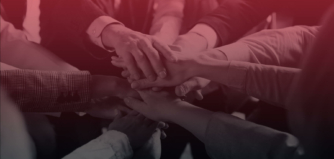“ALS is not an incurable disease. It is an underfunded one.”

May 8, 2018
By Angela Woodall, Healthcare and Environmental Reporter.
Many of us will remember the Facebook images of celebrities submitting to the shock of icy water poured over them to raise money for ALS research. Apart from its obvious viral quality on social media, the icy water was intended to simulate the sensation so that those who take part can experience one of the symptoms of ALS (to a much milder and very temporary extent). This year the ice has been replaced a new social media challenge, the #ALSPepperChallenge, which asks supporters to submit to the shock of a searing heat of chili peppers on their tongue.
Organizers hope that the new campaign will yield the kind of payoff that the original Ice Bucket Challenge was credited with: $115 million in donations that helped the ALS Association fund the discovery of four genes tied to the disease. One of the projects financed by the original initiative helped to develop an assistive device, which restores the natural voice of users, including the man, Pat Quinn, who co-founded the Ice Bucket Challenge.
In between campaigns, the less visible work of lobbying Congress and other federal agencies continues for funding that is channeled back into research. This May, during ALS Awareness Month, hundreds of advocates will once again convene in Washington DC to do the same. This year, however, the event overlaps with the new FDA draft guidelines for ALS clinical trials, whose public comment period just ended. The agency now has to sift through the comments about how best to guide drug developers in conducting clinical research studies involving ALS patients according to the various groups of stakeholders — patients and their families, as well as neuroscientists, neurologists, industry, ALS advocacy groups and researchers.
ALS, also known as amyotrophic lateral sclerosis or Lou Gehrig’s disease, attacks upper and lower motor neurons in the brain and spinal cord, according to the ALS Association. These motor neurons, the longest nerve cells in the body, send nerve fibers from the brain to the spinal cord, and from the spinal cord to muscles throughout the body. People diagnosed with ALS lose their ability to initiate and control muscle movement, leading to paralysis and eventually death. Anthony Senerchia Jr., an ALS patient who inspired the Ice Bucket Challenge, died in 2017, more than a decade after being diagnosed.
The real challenge is finding a treatment and, ultimately, a cure for ALS. That requires a better understanding of the source of the disease. A small percentage (5 to 10 percent) of cases are genetic but the majority — the other 90 percent — are “sporadic” meaning that the cause remains uncertain despite decades of research. Whether sporadic or genetic, no cure exists. However, NEK1, one of the newly discovered genes, is present in both forms of ALS, opening new treatment targets. The discoveries are building on decades of research enhanced by advances in everything from biomarkers to nanotechnology. NEK1, for example, was discovered through the Project MinE effort to sequence the genomes of at least 15,000 people with ALS.
Research organizations are following multiple tracts including precision medicine and environmental factors. They are sponsoring trials to develop tools for stem cell transplant studies, biomarkers and drug efficacy.
For now the only FDA approved drugs for ALS are riluzole, shown to briefly extend life, according to the ALS Therapy Development Institute, the benefactor of the #ALSPepperChallenge, and endaravone, the first new ALS drug in more than 20 years. The Institute has been fundraising for the first in-human trial of AT-1501, an immune response therapy. That recently funded trial joins a host of others that have delivered hope as well as disappointments. In the meantime, the goal is to cast a wide net in order to build the pipeline of treatments for ALS. It is an approach summed up by the slogan of the ALS Therapy Development Institute: “ALS is not an incurable disease. It is an underfunded one.”




